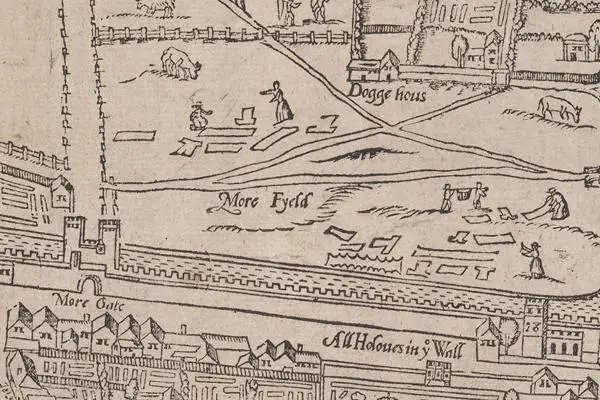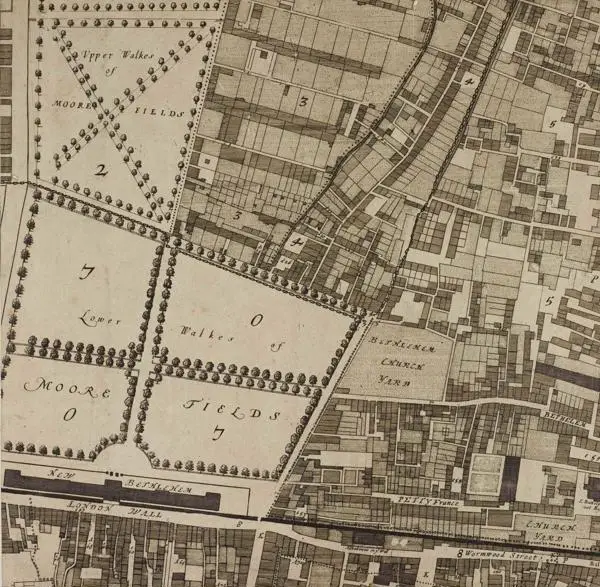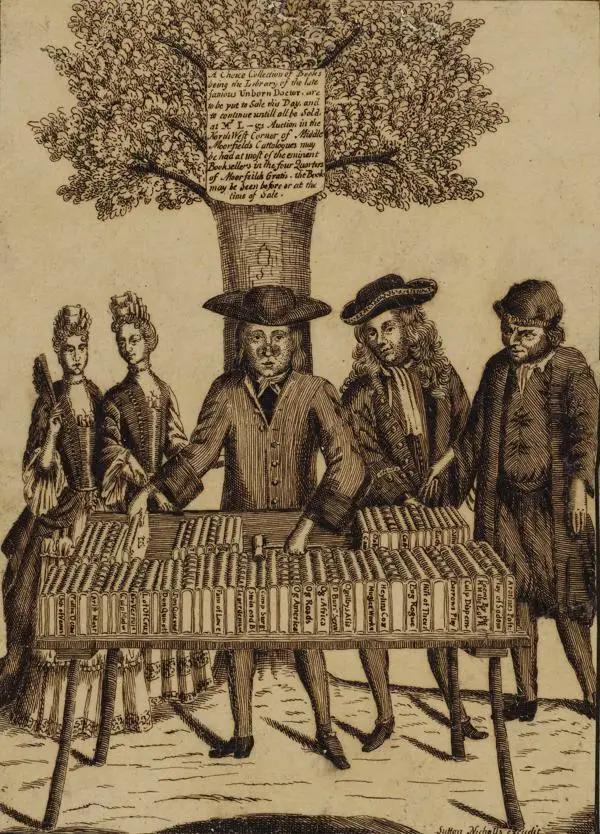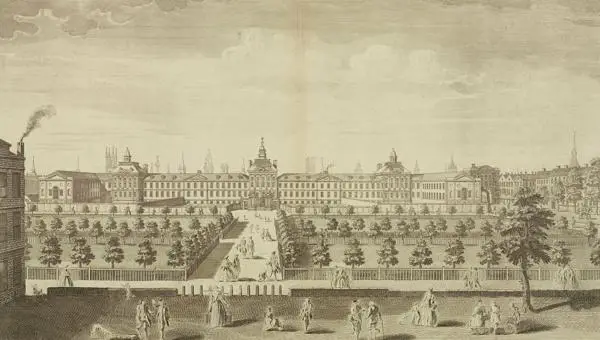Moorfields Mud
To mark the LMA exhibition 'Green City' in summer 2022, this short piece highlights Moorfields - the forerunner of those joyful gardens, parks, wild woods and municipal plantings that featured in the exhibition.
On the northern edge of the City, but crucially outside the walls of the City, Moorfields was a stretch of open country which equates roughly to the present district between The Barbican and Liverpool Street Station. It was mentioned in 1170 by William Fitzstephen (in his Description of London) as a ‘great fen’. For much of the year it was hopelessly muddy, being low-lying before modern building developments, and was criss-crossed by tributaries of the Walbrook River which flowed down from Finsbury and Shoreditch. The mud does not seem to have dissuaded Londoners from using this convenient slice of open country. It was used for sports, grazing of animals, dumping of rubbish and just walking away from the congested streets; except in extreme winter, when the mud might turn to ice sufficient for Londoners to practise their skating.

In the sixteenth century Moorfields started to see some gradual improvements, the malodorous wasteland gradually seeing the arrival of paths, some limited drainage, and later the planting of trees. Games and sports like skittles and archery were practised and it was useful for the drying and airing of laundry. Moorfields was a London park in embryo. Something of this can be seen on the c1570 Civitas Londinium (London Picture Archive 34374).

In 1676, when the Royal Hospital of Bethlehem was built on its southern edge (against the ancient wall; the hospital moved to Lambeth in 1814), Moorfields began to acquire a somewhat fashionable status; a much grander open space came into being with attractive walks and glades and avenues of ornamental trees. This can be detected on the John Ogilby map (LPA 33898) and it gathered pace in the eighteenth century. Archive users will be interested to know that an association developed with book traders who operated from little stalls and tables in the gardens, selling to the affluent visitors (see LPA 1453 and 5632).

Moorfields had come a long way from its muddy origins, but it was not to last long as a polite, verdant attraction. By the end of the eighteenth century the City of London Corporation was planning prestige developments in the area, first a spacious square of houses (Finsbury Square) and then a circus of even grander buildings (Finsbury Circus). Such conscious landscaping as can be seen in these two developments was rare in the City, perhaps a residue of the formal walks and parterres of Moorfields. The architect and planner was George Dance the Younger, City Architect (his plans are in the Sir John Soane’s Museum).

In 1901, after a long struggle, the tempting circular space at Finsbury Circus, which had been maintained for the private enjoyment of local leaseholders, was acquired by the City of London Corporation as a public park. An opening ceremony was held in the middle of a July thunderstorm and work commenced to provide extra seating for the growing army of lunchtime office workers, flower beds for their enjoyment and bins for their sandwich wrappings. A little later it was equipped with a bandstand, water fountains, a pavilion and, charmingly, a bowling green. Many of the plans are held in the City of London’s archive at LMA. By the start of the 20th century, George Dance’s dignified houses had given way to very much larger and more flamboyant corporate showpieces - and many of these too have now given way to modern or post- modern business headquarters. Following a long period in which the park was a major works site for Crossrail, the Finsbury Circus Garden will soon be returned for use by the eagerly waiting local populace.